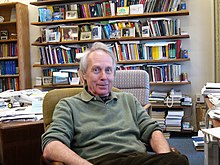
Harry Julian Allen, also known as Harvey Allen, was an aeronautical engineer and a Director of the NASA Ames Research Center, most noted for his "Blunt Body" theory of atmospheric entry which permitted successful recovery of orbiting spacecraft. His technique is still used to this day.
Dr. Henry "Harry" McDonald DSc FREng was a Scottish-American aeronautical engineer specializing in Computational Fluid Dynamics and Director of the NASA Ames Research Center in Moffett Field, California from 1996 to 2002.
Satya Atluri was an Indian-American engineer, educator, researcher and scientist in aerospace engineering, mechanical engineering and computational sciences, who was a Distinguished Professor Emeritus of Aerospace Engineering at the University of California, Irvine. Since 1966, he made fundamental contributions to the development of finite element methods, boundary element methods, Messless Local Petrov-Galerkin (MLPG) methods, Fragile Points Methods, Local Variational Iteration Methods, for general problems of engineering, solid mechanics, fluid dynamics, heat transfer, flexoelectricity, ferromagnetics, gradient and nonlocal theories, nonlinear dynamics, shell theories, micromechanics of materials, structural integrity and damage tolerance, Orbital mechanics, Astrodynamics, digital Twins of Aerospace Systems, etc.
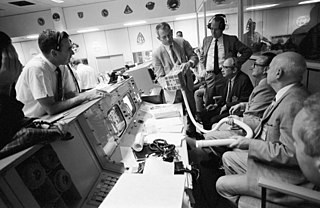
Aerospace engineering is the primary field of engineering concerned with the development of aircraft and spacecraft. It has two major and overlapping branches: aeronautical engineering and astronautical engineering. Avionics engineering is similar, but deals with the electronics side of aerospace engineering.
Charbel Farhat is the Vivian Church Hoff Professor of Aircraft Structures in the School of Engineering at Stanford University, where from 2008 to 2023, he chaired the Department of Aeronautics and Astronautics. From 2022 to 2023, he chaired this department as the inaugural James and Anna Marie Spilker Chair of Aeronautics and Astronautics. He is also Professor in the Institute for Computational and Mathematical Engineering, and Director of the Stanford-King Abdulaziz City for Science and Technology Center of Excellence for Aeronautics and Astronautics. From 2017 to 2023, he served on the Space Technology Industry-Government-University Roundtable; from 2015 to 2019, he served on the United States Air Force Scientific Advisory Board (SAB); from 2008 to 2018, he served on the United States Bureau of Industry and Security's Emerging Technology and Research Advisory Committee (ETRAC) at the United States Department of Commerce; and from 2007 to 2018, he served as the Director of the Army High Performance Computing Research Center at Stanford University. He was designated by the US Navy recruiters as a Primary Key-Influencer and flew with the Blue Angels during Fleet Week 2014.
Mohammed Yousuff Hussaini is an Indian born American applied mathematician. He is the Sir James Lighthill Professor of Mathematics and Computational Science & Engineering at the Florida State University, United States. Hussaini is also the holder of the TMC Eminent Scholar Chair in High Performance Computing at FSU. He is widely known for his research in scientific computation, particularly in the field of computational fluid dynamics (CFD) and Control and optimization. Hussaini co-authored the popular book Spectral Methods in Fluid Dynamics with Claudio Canuto, Alfio Quarteroni, and Thomas Zang. He is the editor-in-chief of the journal Theoretical and Computational Fluid Dynamics.
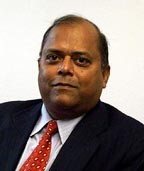
Ramesh K. Agarwal is the William Palm Professor of Engineering in the department of Mechanical Engineering and Materials Science at Washington University in St. Louis. He is also the director of Aerospace Engineering Program, Aerospace Research and Education Center and Computational Fluid Dynamics Laboratory at WUSTL. From 1994 to 1996, he was the Sam Bloomfield Distinguished Professor and Chair of Aerospace Engineering department at Wichita State University in Wichita, Kansas. From 1996 to 2001, he was the Bloomfield Distinguished Professor and the executive director of the National Institute for Aviation Research at Wichita State University. Agarwal received Ph.D in Aeronautical Sciences from Stanford University in 1975, M.S. in Aeronautical Engineering from the University of Minnesota in 1969 and B.S. in Mechanical Engineering from Indian Institute of Technology, Kharagpur, India in 1968.
William Rees Sears was an American aeronautical engineer and educator who worked at Caltech, Northrop Aircraft, Cornell University, and the University of Arizona. He was an editor of the Journal of the Aeronautical Sciences from 1955 to 1963 and the founding Editor of the Annual Review of Fluid Mechanics in 1969.
Holt Ashley was an American aeronautical engineer notable for his seminal research on aeroelasticity.
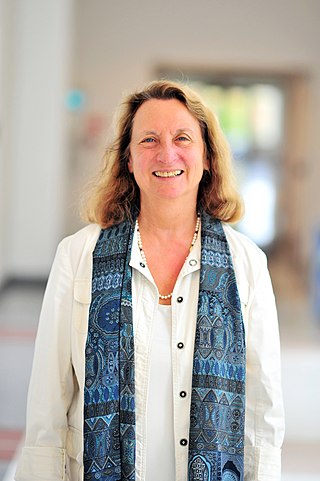
Elaine Surick Oran is an American physical scientist and is considered a world authority on numerical methods for large-scale simulation of physical systems. She has pioneered computational technology to solve complex reactive flow problems, unifying concepts from science, mathematics, engineering, and computer science in a new methodology. An incredibly diverse range of phenomena can be modeled and better understood using her techniques for numerical simulation of fluid flows, ranging from the tightly grouped movements of fish in Earth's oceans to the explosions of far-flung supernovae in space. Her work has contributed significantly to the advancement of the engineering profession.
Luigi Martinelli is an Italian aeronautical engineer, mechanical engineer, and currently a professor of mechanical and aerospace engineering at Princeton University.
Mujeeb R. Malik is a Pakistani born American aerospace engineer serving as Senior Aerodynamicist at NASA Langley Research Center. He is known for his research in boundary layer stability, laminar-turbulent transition, computational methods and aerodynamic simulations. He was the architect of CFD Vision 2030, a NASA-sponsored study to advance the state-of-the-art of computational fluid dynamics (CFD) by exploiting high performance computing and modern validation experiments.

Peyman Givi is a Persian-American rocket scientist and engineer.

Joseph Majdalani is a Lebanese-American professor of Mechanical and Aerospace Engineering. He began his career at Marquette University, before serving as both the Jack D. Whitfield Professor of High Speed Flows and Arnold Chair of Excellence at the University of Tennessee Space Institute. He then served as the Auburn Alumni Engineering Council Endowed Professor and Chair, and is currently the Hugh and Loeda Francis Chair of Excellence in Aerospace Engineering at Auburn University.
Guru Guruswamy is an American engineer working as Principal Scientist at Ames Research Center since 1988. He pioneered research in the area of computational aeroelasticity that involves Unsteady Aerodynamics, Finite Element Methods, Computational Fluid Dynamics, Parallel Computing and Problem-Solving Environment. His innovative research was utilized in the first commercial 3-D computational aeroelasticity software developed by a major aerospace industry. The aeroelasticity legend Holt Ashley extensively referred to Guruswamy's research in his classical review paper. In 1988 he demonstrated the unique use of Transonic Small Perturbation based CFD for designing active controls to increase the safety of aircraft. It was followed by a break through development of Euler flow equations based Computational Aeroelasticy. It was cited by another Aeroelasticity legend John Dugundji of MIT as an important milestone in Aeroelasticity. A google search shows about 150 researchers took advantage Guruswamy's work based on the Euler equations for follow-up developments.

Subrata Roy is an Indian-born American inventor, educator, and scientist known for his work in plasma-based flow control and plasma-based self-sterilizing technology. He is a professor of Mechanical and Aerospace Engineering at the University of Florida and the founding director of the Applied Physics Research Group at the University of Florida.
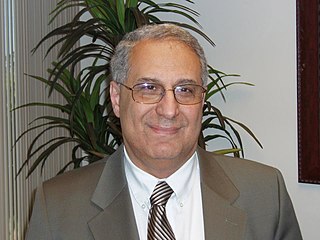
Reda R. Mankbadi is the founding Dean of the Engineering College at Embry-Riddle Aeronautical University. He is a former NASA senior scientist at NASA's Glenn Research Center and a Fellow of the NASA Lewis Research Academy. Mankbadi has published over 150 scientific papers.

Carlos E. S. Cesnik is a Brazilian-American aerospace engineer, academic, and author. He is the Clarence L. (Kelly) Johnson Collegiate Professor of Aerospace Engineering and the founding Director of the Active Aeroelasticity and Structures Research Laboratory at the University of Michigan. He also directs the Airbus-Michigan Center for Aero-Servo-Elasticity of Very Flexible Aircraft (CASE-VFA).

Lyle Norman Long is an academic, and computational scientist. He is a Professor Emeritus of Computational Science, Mathematics, and Engineering at The Pennsylvania State University, and is most known for developing algorithms and software for mathematical models, including neural networks, and robotics. His research has been focused in the fields of computational science, computational neuroscience, cognitive robotics, parallel computing, and software engineering.

Joaquim R. R. A. Martins is an aerospace engineer, academic, and author. He is the Pauline M. Sherman Collegiate Professor in the Department of Aerospace Engineering at the University of Michigan, where he directs the Multidisciplinary Design Optimization Laboratory. He also has a courtesy appointment in the Department of Naval Architecture and Marine Engineering.
